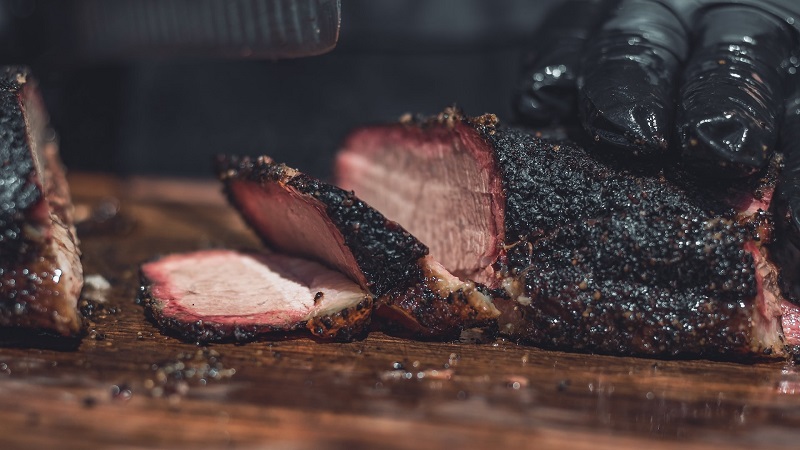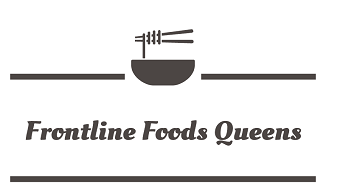There’s no denying that a good brisket is one of the most delicious things you can eat. But how long to rest brisket? Here’s what you need to know.
As every good pitmaster knows, digging right into a beautiful slab of smoked brisket as soon as it comes off the grill would be a grave error. Once the brisket has been removed from the smoker, it must be allowed to rest. Brisket will continue to cook long after it has been removed from the smoker.
Resting smaller pieces of meat, such as pork chops or chicken breast, is much different than resting a brisket. Brisket, like pork butts, is typically rested for a longer period of time, and requires more attention to ensure that the meat does not dry out.
No matter the cooking method, cooked brisket should rest for at least one hour. If you are concerned about retaining heat, you can tent it loosely with foil or place a wrapped brisket in an empty cooler.

What is Resting
After cooking, brisket should be allowed to rest at room temperature for a short period of time in order to ensure that it is cooked through. This simple step can make all the difference between an enjoyable meal and one that’s tough and dry.
When raw meat is cooked, the muscle fibers contract. The moisture within it is forced to the center and surface of the meat where it can cause problems. This is especially true for brisket which has a high water content. Overcooking can result in a dry and tough product. Brisket contains a high amount of collagen, which dissolves during long cooking process, and firms up as the meat cools. This helps to keep the juices in the meat when you slice it.
Resting the brisket before slicing helps redistribute the juices, which makes for a more flavorful and moist slice of brisket. If you cut into it right after cooking it, all of the juices will run out and the meat will be dry and tough.
The second reason for resting meat is that the internal temperature of the brisket will continue to rise by around 5 to 10 degrees F, resulting in a more tender texture. This phenomenon is sometimes referred to as “carryover cooking,” and can make it easy to overcook your meat if you don’t know what you’re doing.
To ensure optimal and best results, the internal temperature of the meat should reach 202 degrees F. That’s why we recommend removing the brisket from the smoker when it reaches 195 degrees F.
Resting the brisket after it’s been smoked or grilled allows the flavors of your rub and barbecue sauce to meld and develop, resulting in a more complex flavor profile.
If you’re looking to enjoy your brisket sooner rather than later, it’s best to wait an hour before slicing. Although the meat will cool off enough for the collagen to firm up again, it will still be noticeably warm when you serve it. After two hours, the meat will start to cool more rapidly, which means you may need to reheat it. Reheating will cause the brisket to dry out, so avoid it if possible.
What is Brisket
The beef brisket is a cut from the lower region of a steer, just below the chuck (or shoulder). There are two per animal, one on each foreleg.
Because brisket is a muscle that is used to carry a lot of weight, it has a lot of connective tissue. This connective tissue can be tough if the meat isn’t cooked properly, so until someone discovered that low and slow cooking could be the answer, brisket wasn’t very popular. The long cooking time allowed the fat to render and the connective tissue to break down, resulting in tasty and tender brisket.
The whole brisket can weigh up to 20 pounds and smoking it is the great way to cook it. If you don’t have a smoker, cooking the brisket in the oven overnight is a good alternative.
A whole packer brisket is composed of two muscles, the point and the flat. The point is a large, thicker and fattier muscle that’s located near the end of the brisket, while the flat is the thinner part which is a located closer to where it meets with the point. Because this meat is so large, butchers often split it into these two parts in order to move it more quickly through their shop.
Pro Tips About How Long To Rest Brisket
Do You Rest The Brisket Wrapped Or Unwrapped?
Resting the brisket unwrapped will help circulate air around it, which is why you should always remove the wrapping before starting the resting period. Additionally, keeping brisket wrapped will trap heat in with the meat and this could lead to an overcooked or dry brisket.
There is no need to wrap brisket in butcher paper or aluminum foil when cooking it; it’s up to you and your preferences. Cooking brisket without wrapping will give it a delicious smoky, charred outside. However, if brisket is cooked this way it can easily become dried out.
Brisket can be cooked by wrapping it in foil or parchment paper and then cooking it at a low temperatures for a long time. This traps the moisture inside the meat, which allows you to cook the outside bark to your desired appearance. One popular alternative to aluminum foil when cooking a brisket is butcher’s paper. Butcher paper helps to create a more moist and juicy brisket.
After Resting, What Temperature Should A Brisket Be?
To ensure the best outcome when cooking brisket, it should be removed from the heat at around 190 degrees F to reach 203 degrees F during the initial resting period. This is due to carry-over cooking, so it is necessary to remove brisket before it reaches its ideal internal temperature. The reliable way to ensure you are reaching the correct internal temperature is by using an internal meat thermometer.
Should I Rest Brisket in Foil?
When resting brisket, it is important to wrap the meat in aluminum foil to prevent any moisture from escaping and also help the brisket retain some heat. Once the meat is removed from the smoker, keep it wrapped in foil, then wrap it in a towel and place it in a dry insulated cooler.
Wrapping brisket in foil can cause it to produce steam, which may soften the bark on the brisket though.
If you plan on wrapping your brisket in foil, be sure to follow these guidelines:
- The foil should fit snugly so that steam cannot escape.
- Take care not to touch the hot foil with your bare hands.
- Make sure the foil doesn’t touch the meat, as this will stop it from cooking properly.
- Finally, let the meat rest for the recommended amount of time before slicing and serving
Should I Wrap The Brisket In Butcher Paper To Rest It?
If you wrap your brisket in butcher paper, it will eventually reach a temperature of 195 to 203 degrees Fahrenheit. After this point, remove the brisket from the smoker and allow it to rest so that juices don’t escape. If stored correctly, a brisket can stay hot for 3 to 4 hours after being removed from the smoker.
Wrapping brisket in butcher’s paper is a popular technique that has been made popular by Aaron Franklin. His video proves that this method produces interesting results, with pros and cons for each approach. The only way to find out if you like this technique is to try it yourself!
If you’re planning on resting your brisket in butcher paper, be sure to keep these few things in mind. First and foremost, make sure the butcher paper is snugly fitting – no steam should escape. Secondly, be careful not to touch the hot paper with your hands – it could cause burns. Finally, make sure that the butcher paper doesn’t come into contact with the meat itself – this will prevent it from cooking properly. If you followed these guidelines, chances are your perfect brisket will arrive at dinner table perfectly cooked and juicy!
Should I Let My Brisket Rest In A Cooler?
If you plan to eat brisket within 1 to 2 hours of cooking it, you can rest it on a cutting board in a room temperature setting.
If you plan to cook your brisket further in advance, you can place it in a cooler to slow down the cooling process. This will help the brisket maintain its safe temperature for longer before you cut into it.
Frequently Asked Questions About How Long To Rest Brisket
When is a Brisket Done?
A brisket is done once it reaches a 203 degrees F internal temperature, but anywhere within a few degrees of this is perfectly fine. Keep in mind that brisket will continue to cook during the resting process as the meat re-absorbs the natural juices. Slicing the brisket too early will ruin your brisket because the juices will be lost and the meat will be dry.
Does Resting Brisket Cause The Bark To Soften?
Brisket that is wrapped in foil may soften its bark. When you wrap a brisket in foil, it creates steam which softens the bark. The best way to counter this is to place the brisket back over the heat so that the bark hardens.
If you want a crispy bark, you can put the meat back on the smoker or the oven for 30 minutes so the outer layer can dry out a little, but don’t leave it too long and keep the heat low in the 200 to 220 degrees F range.
Does the Brisket Need to Rest Before Slicing?
Brisket needs to rest so that the meat can retain juices. If you slice brisket before it has rested, all of the juice will be lost.
What Happens to the Brisket If I Don’t Rest It?
Resting the brisket after smoking process will ensure that the meat is tender and juicy. The brisket will continue to cook for a couple of hours after being removed from the smoker. This resting time is important because it allows the meat to become tender and reabsorb moisture. If you skip this stage and slice the brisket without resting, it will be chewy and may dry out fast.
Experiments have shown that cutting into a large roast immediately after removing it from the heat source will result in about 10 tablespoons of juices being eliminated. When slicing a brisket, it is important to retain as much of the juices as possible in order to achieve a juicy and flavorful final product.
Waiting 10 minutes will decrease the loss of juices to 4 tablespoons. Waiting 40 minutes will result in a loss of just under one tablespoon of juice. To ensure that any juices that do flow out are captured, we recommend using either a rimmed platter or cutting board with an indentation specifically designed for slicing meats.
Does Resting Prevent Dry Brisket?
Resting the brisket will help it retain moisture and make it juicy when sliced. Cutting the meat too soon after cooking can lead to a moisture loss, and juices may spill out onto the cutting board.


